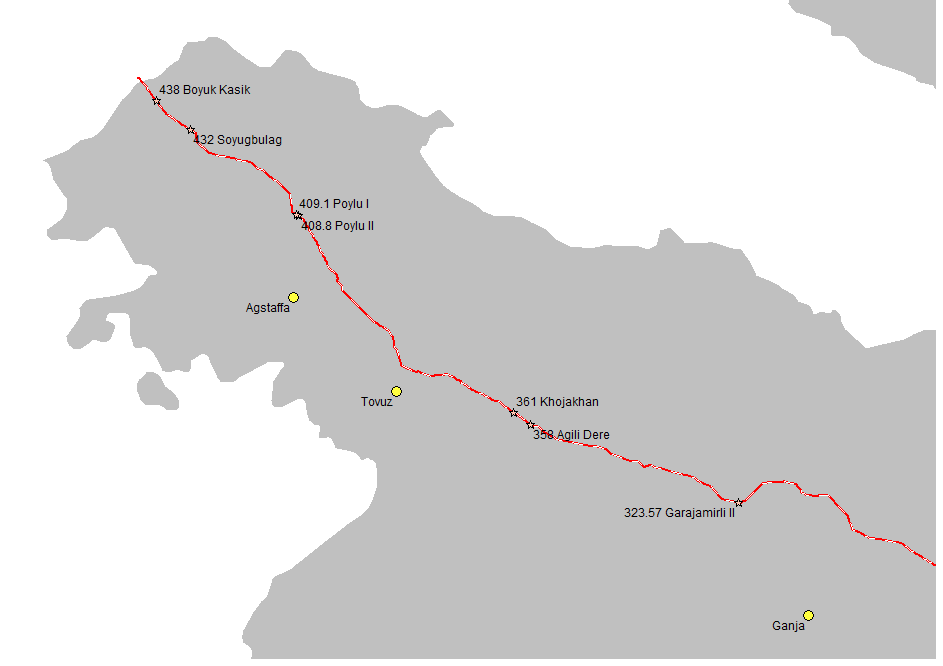The project encountered sites of this period at seven locations; Garajamirli II, Agili Dere, Khojakhan, Poylu II, Poylu I, Soyugbulag and Boyuk Kasik. The major sites were Poylu II and Boyuk Kasik, which were the most substantial settlements along with Khojakhan. The remaining sites consisted of a few locations containing Eneolithic pottery, which do not provide much additional data beyond indicating the spread and diversity of sites of this period. The burial cemetery of Soyugbulag represents the exception to this, and is the earliest dated site in the Caucasus to use the stone kurgan form of burial.
Poylu II, Boyuk Kasik and Soyugbulag all received independent dating using radiocarbon, which produced a date in the middle Eneolithic period. Unfortunately, the site of Khojakhan had no suitable samples for dating, which is a pity given the apparent continuation of use of the site into the early Bronze Age; a range of dates from this site could have indicated whether there was a wide range of separation of time between the two episodes of use.

The comments facility has now been turned off.
| Please note that in 2010, a major project began between a French and German team and the Institute of Archaeology and Ethnography looking at the geomorphological changes in the middle Kura valley since the Chalcolithic period | Dave Maynard |
© Internet Archaeology/Author(s)
University of York legal statements | Terms and Conditions
| File last updated: Fri Jun 17 2011